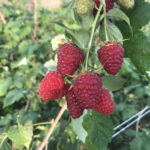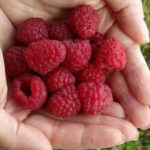Raspberry Variety Inaccessible
The magnificent variety of raspberries Inaccessible is the result of the works of the famous Russian scientist who devoted many years of his life to the selection of this berry, Professor and Honored Scientist of the Russian Federation Viktor Kichina.
Heading the department of genetics and breeding of the All-Russian Institute of Selection and Technology of Horticulture and Nursery (VSTISP) for 39 years, Viktor Valerianovich managed to achieve amazing results, endowing gardeners with wonderful new varieties of raspberries, both regular and remontant. The main advantage of the latter is the ability to bear fruit not only on two-year-old shoots, but also on annual ones. At the same time, the harvest on the stems of the current year begins to ripen in the second half of summer, and the harvest continues until the very frost, which significantly extends the period of consumption of fresh berries. In addition, with a one-year growing cycle, during which the aerial part of remontant raspberries is removed annually in the fall, and the harvest is obtained only on a one-year growth, the highest frost resistance of the bushes and an improvement in their phytosanitary state become significant positive factors. This is due to the fact that, together with the removed vegetative mass, many pests and pathogens of various diseases are destroyed, and the most severe frosts are completely covered with snow for plants.
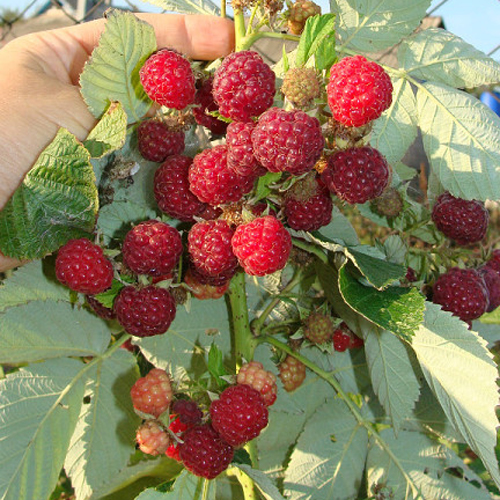
Our heroine belongs to this type of raspberry. To obtain it, the author in 1988 sowed a mixture of seeds collected at the Scottish Institute of Horticulture, derived from free pollination of local remontant forms, and two years later he selected the best seedling, which laid the foundation for a new variety. Since 1992, the Unattainable entered breeding and became available to gardeners, who instantly appreciated a lot of its advantages and distributed it in various parts of our country and neighboring countries.
In addition to the qualities characteristic of all remontant varieties, this form is distinguished by a relatively early ripening period, as a result of which, before the autumn frosts, it manages to largely realize its yield potential even in the Non-Chernozem belt. The productivity of the variety is high, the aesthetic and gastronomic properties of the fruits are also quite good. Among the shortcomings, it is worth noting a weak drought resistance, as well as the dependence of the taste of berries on weather conditions and the level of agricultural technology.
In general, the Inaccessible can be characterized as a very successful work of the author, which does not lose its attractiveness in the eyes of amateurs and farmers decades after its appearance, even against the background of numerous modern novelties.
Agrobiological properties
Bushes of short stature, compact enough to accommodate a larger number of plants per unit area. As a rule, they do not exceed 1-1.5 meters in height and 80 cm in diameter. The stems grow sprawling, strong and resilient, with shortened internodes. At the time of fruiting, they are abundantly strewn with fruits, under the weight of which they can lean to the ground, and therefore the variety requires the obligatory arrangement of trellises on the site, or the construction of supports of a different type. Each bush annually forms up to 6-8 replacement shoots and 5-10 root suckers, and therefore there is no shortage of planting material for reproduction. Young shoots are to a certain extent runners (i.e., noticeably and evenly thickened towards the bottom), green in color, and practically no wax coating on them. Studs are average in intensity. The thorns are evenly spaced along the length of the stem, and by their presence do not cause significant problems when caring for plants and harvesting. Ripe shoots acquire a yellow-brown color, which remains in the second year of their life.
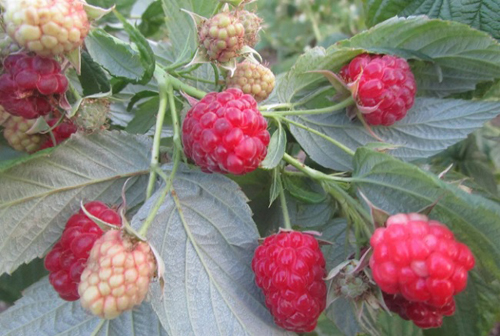
Leaves are large, complex type, consisting of three or five simple leaves, collected on petioles of moderate length. The leaf blades are oval with a pointed end, light green, medium wrinkled. The profile of the sheet is flat, or slightly bent down. The edge of the leaf blade is grooved. A negative feature of the Inaccessible is its susceptibility to chlorosis, which is expressed in the violation of the formation of chlorophyll in the leaves and a change in their color to yellowish. In most cases, this is due to insufficient absorption of iron from the soil, and is treated with foliar dressing with this trace element. Laterals begin to appear on young stems rather close to the surface of the earth, and therefore the length of the fruit zone, which has up to four orders of branching, reaches one meter. Fruit formations sit in a heap, and in total from 20 to 50 berries are formed on them.
As a remontant variety, our heroine can bring two harvests per season - at the beginning and at the end of summer. The first is formed on two-year-old shoots, like in ordinary varieties, and the second on the stems of the current year, and it turns out to be stretched in time until the frosts in the fall. In practice, agronomists recommend abandoning the first harvest in favor of the main one, which in this type of varieties is late-summer. The reasons for this approach are quite understandable. Forming the first wave of berries in late June - early July, plants divert nutrients from annual shoots, which as a result develop more slowly than they could, and, accordingly, themselves later enter the fruiting stage. The time lost in this case leads to direct losses of the main crop, because the bushes limited by the onset of frost do not have time to adequately realize their potential productivity. In addition, when preserving raspberry stems for the second year, unnecessary trouble arises with ensuring their viability in winter, as well as protecting plants from pests and diseases, which in this case turn out to be much more active than with a one-year growing cycle.
The usual ripening period for berries on the shoots of the current year in the middle lane of our country is August 5-7. Within a month, you can manage to carry out up to five full-fledged harvests, and by the end of the first decade of September, the main volume of raspberries will be received. The gross yield during this time can reach 2-3 kg of fruits from each bush, or more than 100 centners per hectare of plantations. Difficulties with cleaning Unattainable do not arise, tk. it is relatively easy to separate from the stalk.
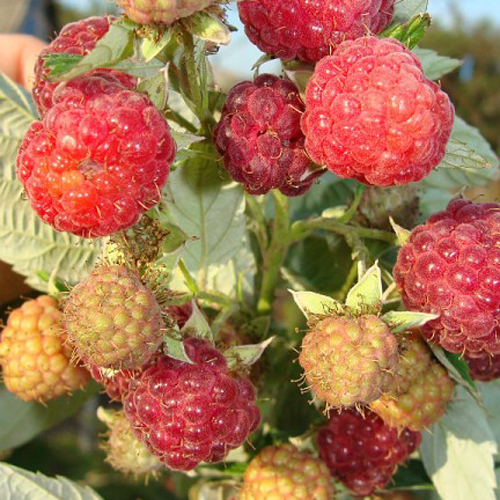
The berries grow quite large, up to three centimeters in height and an average weight of up to 4-5 grams. Their shape is blunt-conical, the color is dark red with a shiny, very attractive surface. The consistency is medium in density, but quite juicy. The drupes of the fruit are small, homogeneous, according to the author, firmly attached to each other. However, many gardeners question this very characteristic, noting that the berries tend to disintegrate into separate fragments. The taste of raspberries is harmonious, sweet and sour, the aroma is moderately expressed. The number of seeds is small, and they do not have a significant negative impact on the palatability of the fruit. The general tasting scores of Inaccessible by gardeners are high, but for this it is necessary to provide it with proper care, good lighting and an optimal balance of soil moisture.
Due to its excellent gastronomic properties, our heroine can be successfully used for fresh consumption. Customers also appreciate its beautiful, striking appearance, so that it can be unambiguously recognized as a "market" variety with certain reservations. In particular, such an important parameter for farmers as the transportability of the crop is satisfactory for this variety, which is all due to the same insufficient fastening of the drupes. This fact requires careful handling of them, and ideally - collecting raspberries in a portioned container, in which they will be sold, which will eliminate the need to handle the fruits and their inevitable damage at the same time.In individual farms, where the crop is cultivated for their own consumption, the degree of suitability of the crop for all sorts of movements plays a lesser role, because even a slightly substandard product will always find its use in home canning, in the manufacture of jam, jam, compote or confiture. As a raw material for winter harvesting, Inaccessible performs very well. Due to the high content of anthocyanins, these products acquire a rich color, which is invariably complemented by the fullness of taste and aroma.
When cultivated, the variety shows itself on the positive side, demonstrating good resistance to common pests and diseases, as well as increased resistance to low winter temperatures. In addition, it grows equally well on different types of soils, differing in texture and level of fertility. Limitations arise only in case of excessive acidification of the soil, salinity, excess moisture,
The placement of this raspberry is carried out on gentle slopes of warm exposures, or on flat areas, protected, if possible, from cold northerly winds. Here, the soil warms up earlier in the spring, and the sum of active temperatures reaches higher values compared to the average for the area. As a result, the plants start growing earlier, and the ripening of the crop, accordingly, occurs faster. With this approach, the maximum number of berries has time to ripen, and the productivity potential is revealed most fully. In household and garden plots, the same effect can be achieved by planting raspberries on the sunny side of houses or other buildings.
During the growing season, weeding of row spacings, watering and feeding the plants, and tying the stems are regularly carried out. In the fall, after the final harvest, all sprouted shoots are removed and burned.




